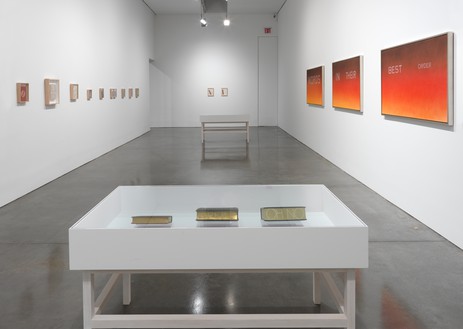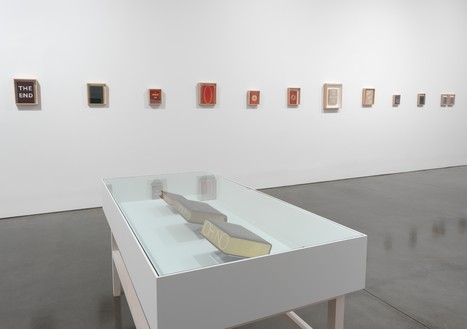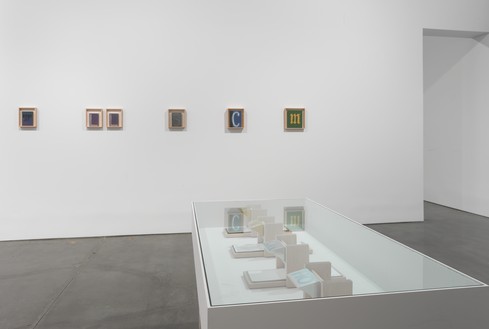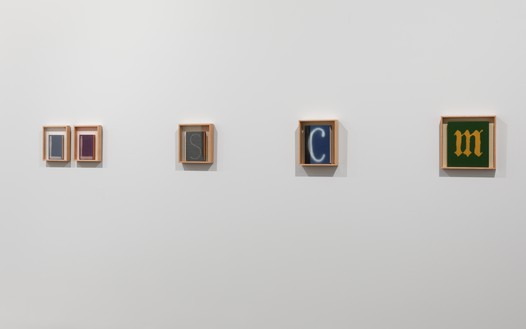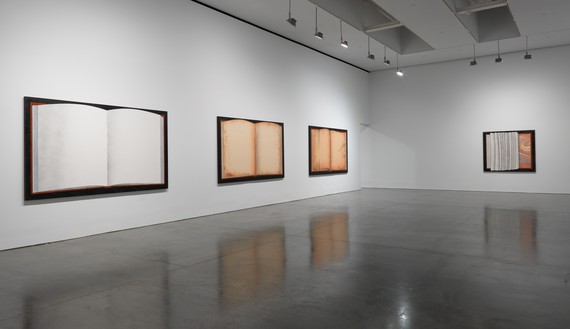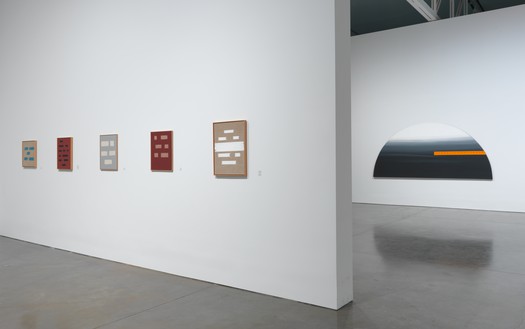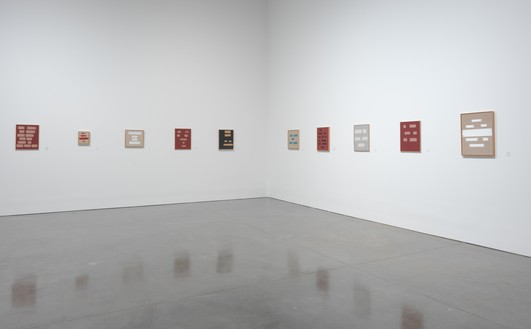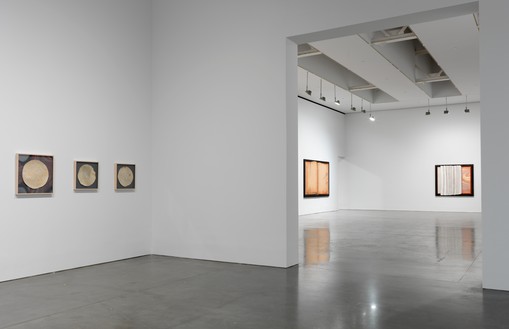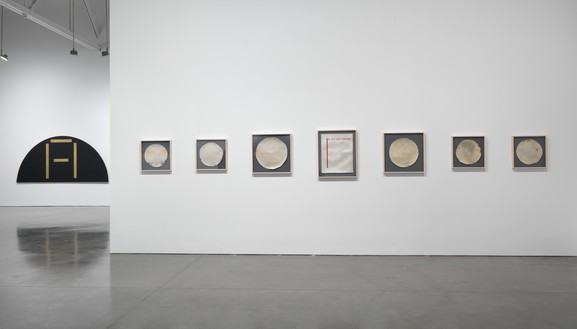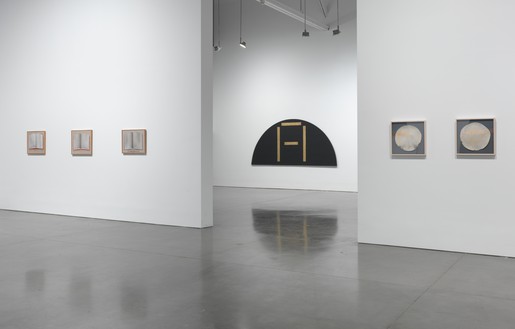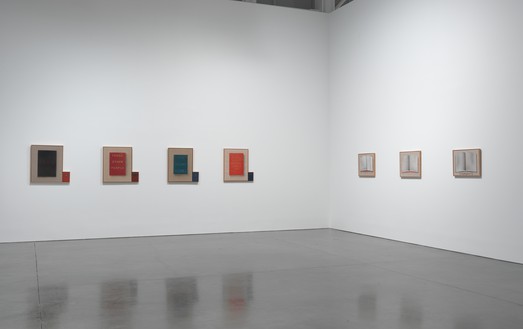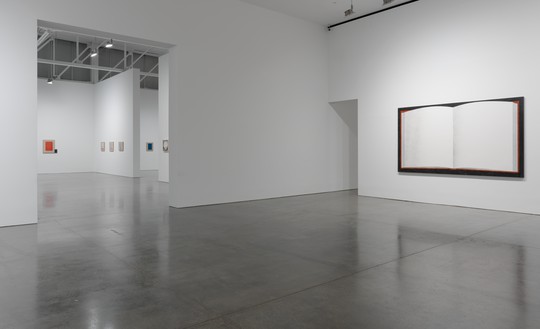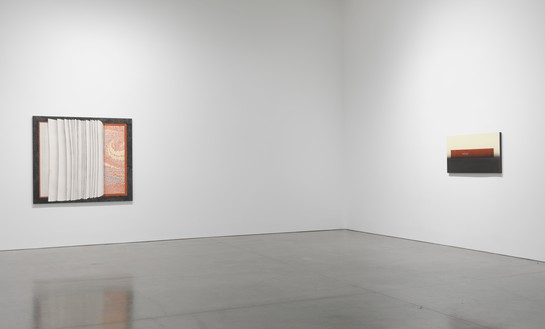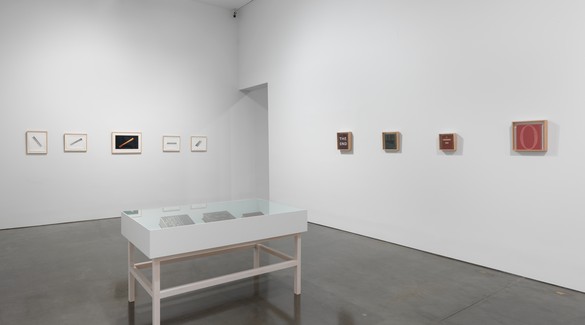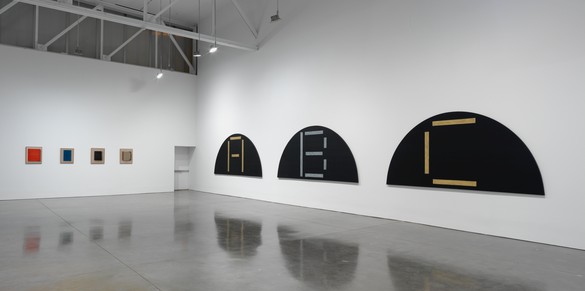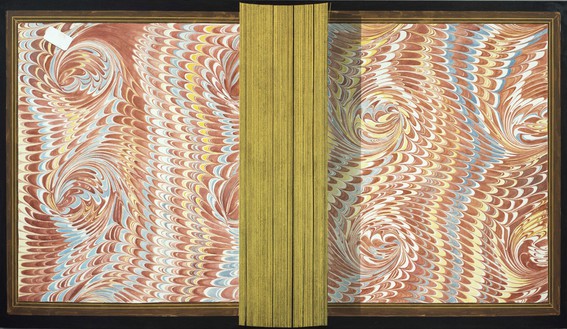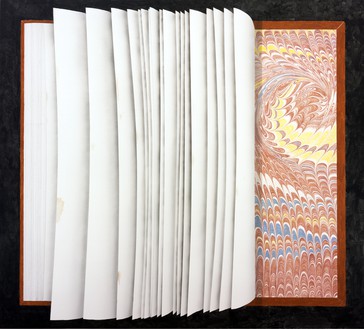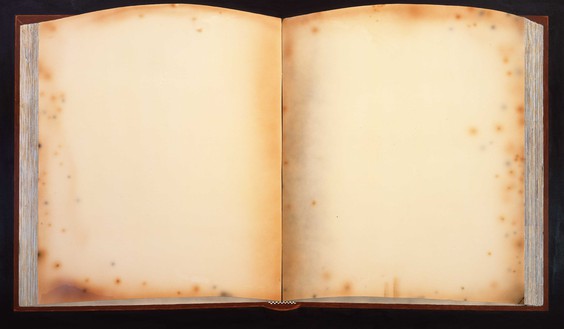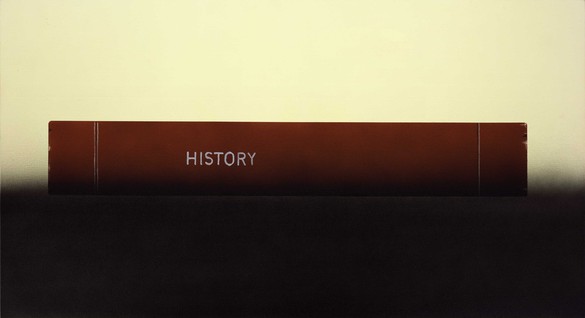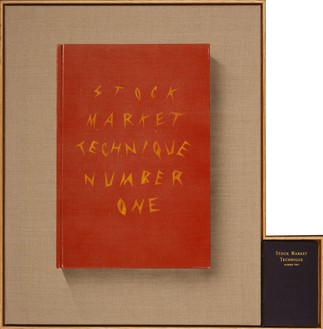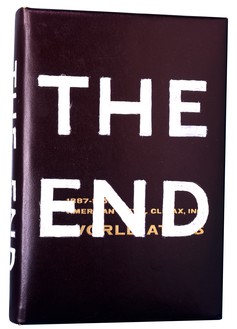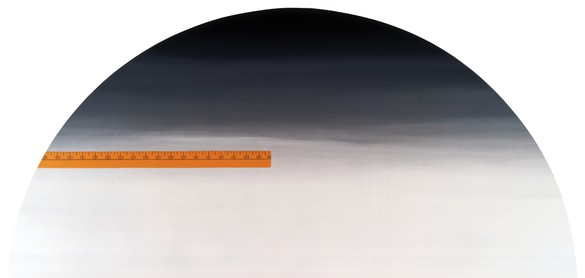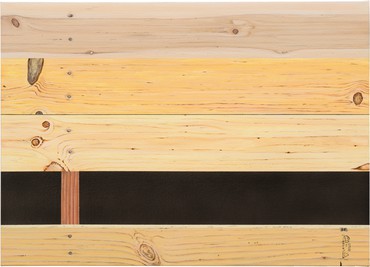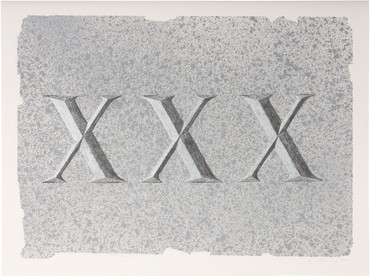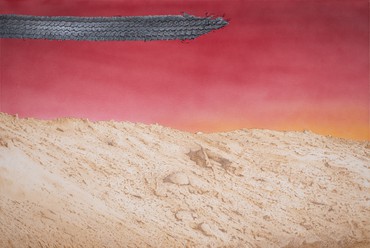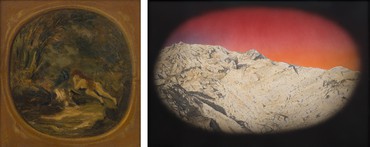About
Sometimes I wonder whether I am painting pictures of words or whether I’m painting pictures with words.
—Ed Ruscha
Ed Ruscha’s oeuvre has never been confined to established categories of style or media; for instance, books, drawings, prints, photography, and painting are used in parallel, together with materials as unconventional as gunpowder, fruit juice, bleach, coffee, and syrup. But throughout his restrained yet daring experimentation, writing as act and subject, in print form or painted on canvas, has remained a constant inspiration for his iconic images of the American vernacular. His singular, sometimes oblique use of words allows for the exploration of the role of signifiers in language and thought, while his range of artistic means allows the act of reading to be literally manipulated as a process by which to generate meaning.
Following Reading Ed Ruscha at Kunsthaus Bregenz, which fully explored Ruscha’s obsession with books and language from the outset of his career, this exhibition focuses on his richly diverse investigations of the book as a subject, as a support for making pictures, or as an actual object. It includes acrylic and oil paintings, on stretched, unstretched, and shaped canvases, drawings on paper, watercolors on vellum, photographs, and book works.
In the modestly scaled painting History Book Laying on a Table (2012), the prone spine of the reference book demarcates two contrasting zones of light and dark, a schematic depiction of the Manichean forces at work in the march of time. The large-scale painting Gilded, Marbled and Foibled (2011–12)—the title a wry nod to early Conceptual art instruction—combines the exquisite detail of an illuminated manuscript with the hallucinatory patterns of marbled paper. Material references to traditional bookmaking are evident in the small-scale Open Book series (2002–05), where blank double pages are weightlessly painted on untreated linen, and in the circular vellum paintings with their obtuse, gilded thoughts. The three monumental canvases that form the Old Book cycle present a vanitas in which the ravages of time appear in the painted exactitude of fraying bindings, mold spots, and worm holes.
Various bookworks provide corollaries to the paintings. A strategy for a series of small abstract paintings from 1994–95, in which insidious threats are rendered in paint or bleach as blank widths of contrasting color like Morse communication, resurfaces a decade later in book covers, where the oppositional actions of enunciation and erasure meet. In another book series, Ruscha has again used bleach to leach a single large initial on the colored linen covers of found books, such as a gothic M on the cover of Imaginary Gardens, or L L on two matching tomes of Shakespeare plays, by which they become Twins (diptych) in form if not content. In another, monochrome books mimic Minimalist objects, sporting weighty, generic titles such as Atlas or Bible.
Share

Flags
Gillian Pistell writes on the loaded symbol of the American flag in the work of postwar and contemporary artists.

Donald Marron
Jacoba Urist profiles the legendary collector.
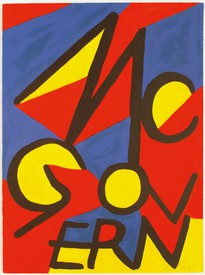
The Art History of Presidential Campaign Posters
Against the backdrop of the 2020 US presidential election, historian Hal Wert takes us through the artistic and political evolution of American campaign posters, from their origin in 1844 to the present. In an interview with Quarterly editor Gillian Jakab, Wert highlights an array of landmark posters and the artists who made them.
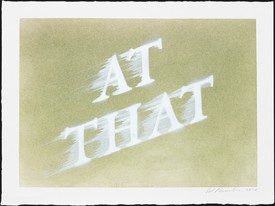
“Things Fall Apart”: Ed Ruscha’s Swiped Words
Lisa Turvey examines the range of effects conveyed by the blurred phrases in recent drawings by the artist, detailing the ways these words in motion evoke the experience of the current moment.

Artists’ Magazines
Gwen Allen recounts her discovery of cutting-edge artists’ magazines from the 1960s and 1970s and explores the roots and implications of these singular publications.
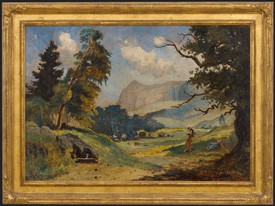
Eilshemius and Me: An Interview with Ed Ruscha
Ed Ruscha tells Viet-Nu Nguyen and Leta Grzan how he first encountered Louis Michel Eilshemius’s paintings, which of the artist’s aesthetic innovations captured his imagination, and how his own work relates to and differs from that of this “Neglected Marvel.”
News
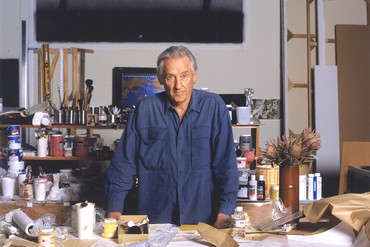
Artist Spotlight
Ed Ruscha
September 16–22, 2020
At the start of his artistic career, Ed Ruscha called himself an “abstract artist . . . who deals with subject matter.” Abandoning academic connotations that came to be associated with Abstract Expressionism, he looked instead to tropes of advertising and brought words—as form, symbol, and material—to the forefront of painting. Working in diverse media with humor and wit, he oscillates between sign and substance, locating the sublime in landscapes both natural and artificial. Ruscha’s formal experimentations and clever use of the American vernacular have evolved in form and meaning as technology alters the essence of human communication.
Photo: Kate Simon

galleryplatform.la
Ed Ruscha
Drum Skins
May 28–June 30, 2020
Gagosian is pleased to present recent paintings by Ed Ruscha online for galleryplatform.la. Fifty years ago, Ruscha purchased a set of vellum drum skins from a leather shop in Los Angeles. He has continued to collect these vintage objects, and since 2011 he has used them as canvases for the works on view in his solo exhibition Drum Skins at the Blanton Museum of Art at the University of Texas at Austin.
Installation view, Ed Ruscha: Drum Skins, Blanton Museum of Art, University of Texas at Austin, January 11–October 4, 2020. Artwork © Ed Ruscha


